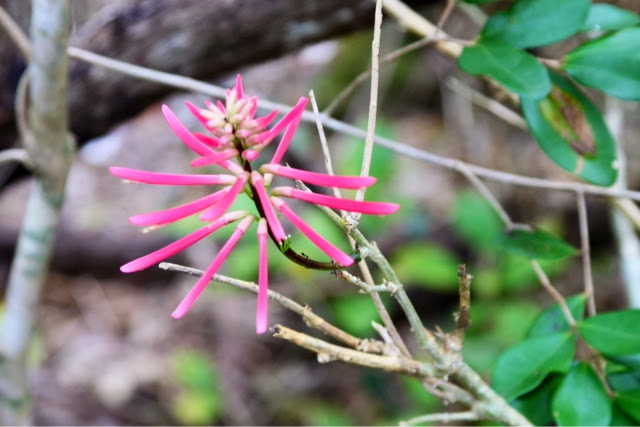J. N. "Ding" Darling National Wildlife Refuge is located on Sanibel Island and provides sanctuary for many bird species, wild animals, and native vegetation. Darling was a newspaper cartoonist who won two Nobel Peace Prizes for his cartoons and was an avid conservationist. He initiated the Federal Duck Stamp program and designed the first stamp. That's a white pelican in the photo but you'll see more of those!
Roseate Spoonbill resting with his bill under his wing among lots of Black Bellied Plovers.
Tarpon Bay
Mother White Ibis with two babies following her. They are all brown or brown turning white. This immature plumage is kept for 1 year.
The sun is trying to peek through this morning!
White Pelicans, two Brown Pelicans, Willets, a couple of Anhingas, and Spotted Sandpipers.
A row of pelicans swimming towards a mud flat.
They arrived - that's them on the right!
Mostly pelicans, two Anhingas with a few shorebirds.
The Red Mangrove is a survivor; the seed's taproot pokes out of the shell before it ever falls from the tree. When it hits the mud below the root is embedded and ready to begin growing.
Horseshoe Crab
Bark of the Gumbo Limbo tree, it's also called the "tourist tree" by the locals because it's white bark turns red and peels!
Cool tree with a nesting hole all the way through! Two entrances...
Shell Mound, see how the dirt under this tree's root system is made of shells.
A shell in the leaf litter on the mound.
Thought you would all like to see the differences between an alligator and crocodile skull.
Sanibel Lighthouse was lighted for the first time in August 1884.
We walked along the beaches on Sanibel Island and watched the sunset. Sanibel is know for it's seashells - we saw thousands of small shells at the high tide line, they eventually become the sandy beaches.
This Star fruit tree was behind our trailer at Shady Acres in Fort Meyer - don't know if anyone ever harvested them.































No comments:
Post a Comment